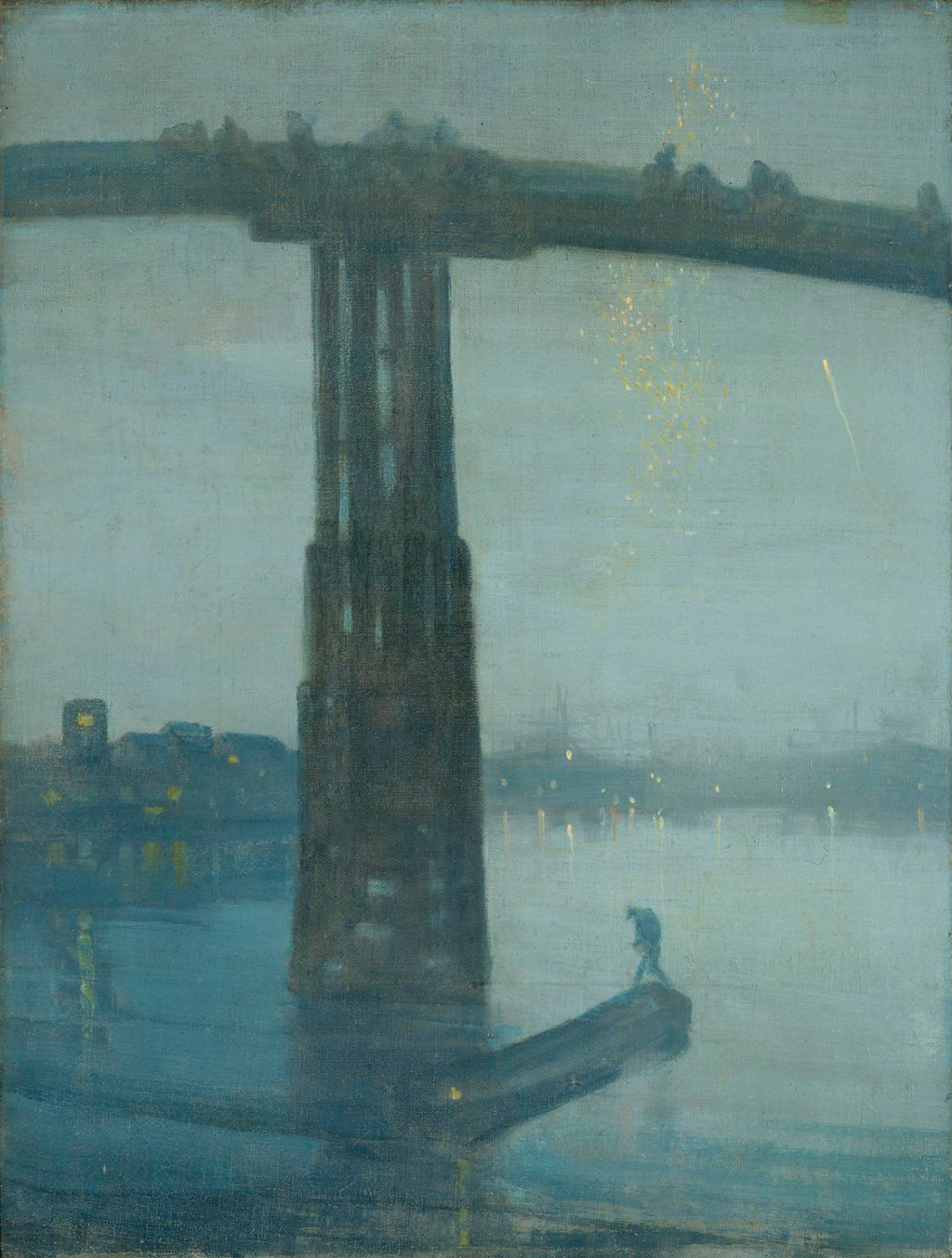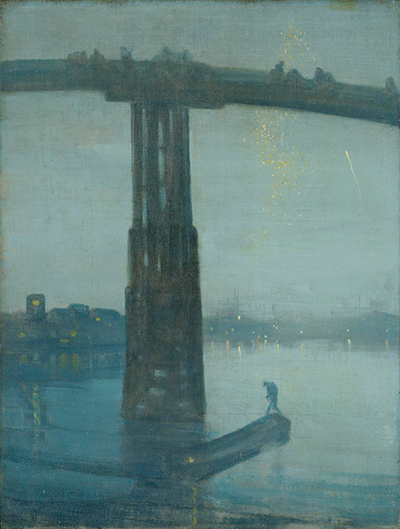In 1859, following a very successful artistic career in North America and in Paris, James Abbott McNeill Whistler arrived in London.
Immediately, he began work on his Thames Set, a series of etchings that evoked London's major river at various times of day, weather and tidal conditions, and depicting fluctuations of river traffic. For the next twenty years, Whistler lived in the capital on wealth accumulated in his earlier years, working on paintings based on these etchings. The works are striking for two reasons. First, Whistler rejected the bright colours favoured by his contemporary Impressionist artists and instead, painted in a monochromic palette of greys, white and cream, brown and darker blues.
In the majority of his works, Whistler added daubs of colour only sparingly. In addition, he named the works as if they were pieces of music, prefixing them as nocturne, harmony, symphony, and so forth. This nomenclature paralleled the late nineteenth-century fashion for short, mood-inducing pieces of music in contrast to the grandiose, three-movement symphonies that had been fashionable in the century’s earlier decades. The notion of a painting as a piece of music was no doubt augmented by the middle-class Victorian fashion for keeping a piano in the domestic home.
Whistler understood that families could now appreciate a painting in the same way as they listened to a piece of impromptu music, played by a talented parent or sibling. Although he drew his imagery from real life, Whistler's paintings did not tell a grand story. Rather, they evoked a moment in time, with a mixture of minor notes – the blues and the greys – overlaid by the sunnier, major notes, that is, red, orange and yellow.
The viewer sees this effect in Nocturne Blue And Gold – Old Battersea Bridge (1872). The major part of the painting is composed of minor notes, that is, the pale blue water and sky, and the darker greys of the city and the hulking Battersea Bridge. The man on the boat in the foreground, and the men on the bridge soften and humanise its brooding presence somewhat, as do the sparse gold tints of the city lights and the sprinkling of stars in the sky. The painting is indeed a nocturne, a gentle piece played as the town goes to sleep following the frenetic activity of the day. The original painting is in Tate Britain Gallery, London.





